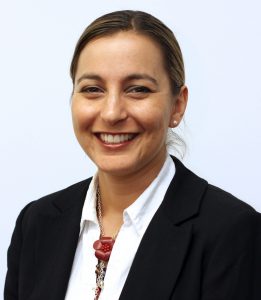As Australia and global communities increasingly endure multiple disasters, often simultaneously, disaster management for resilience should be a core concern for leaders, according to experts on a key panel held by Griffith University.
Queensland Reconstruction Authority’s (QRA) Brendan Moon, Australian Red Cross Queensland’s Collin Sivalingum, Suncorp Insurance’s Joshua Cooney, Local Government Association of Queensland’s Mike Lollback and Queensland Inspector-General of Emergency Management Alistair Dawson gathered recently to share insights and expertise in a bid to highlight the importance of disaster resilience.
Associate Professor Cheryl Desha, from Griffith Sciences’ School of Engineering and Built Environment, warned of a future that required thoughtful consideration and planning to ensure resilience on the other side.
“For thousands of years in recent history, we’ve dealt with adversity in the form of disasters — in a recent built environment context with buildings being subject to extreme weather events and human beings being exposed to pandemics and other such disasters,” Associate Professor Desha said.
“As we face COVID-19, we face that unprecedented complexity in attempting to manage multiple disasters at the same time.”
“That additional complexity, without break these days, is leaving us in an ‘always on’ environment for decision-making and our leadership.
“That is really the likely near future reality for us all.”

Associate Professor Cheryl Desha.
Associate Professor Desha said leaders were facing the “here-and-now” question of how to rapidly adapt so communities could thrive, not just survive.
“Colleagues and organisations around Australia and internationally are engaging with disaster management for resilience, tackling unprecedented challenges and, perhaps, unprecedented opportunities for improving our resilience of infrastructure in our communities for future disasters,” she said.
QRA is Australia’s only permanent disaster recovery agency and since 2011, Mr Moon said Queenslanders had experienced 80 natural disasters from floods and cyclones to bush fires.
“In the last three years alone, 75 of (Queensland’s) 77 councils have had to anticipate, absorb, recover and adapt to natural disaster recovery,” he shared.
“Over two-thirds of those communities have experience multiple events, so…communities have found themselves in a perpetual state of recovery.”
Mr Moon said in the QRA’s experience, many communities would reconstruct buildings, only to have them damaged again by another disaster a couple of years later.

Brendan Moon presented virtually.
“Absolutely key to us is hearing those local stories of what infrastructure, what communities, what natural systems, what economies are at risk in the face of not only historic climate risk, but also starting to overlay what the future looks like,” he said.
“We were rebuilding communities and rebuilding assets, only to have them subsequently damaged and destroyed in events only two years later
“In 2022, our aim is to not only have that ability to support recovery, but it is also to have locally-led and place-based approaches to strengthen disaster resilience.”
Mr Moon said locally lead recovery — supported by the state and Federal governments — was key to the success of any recovery and building resilience within our communities.
“We require deep connections between all sectors between local, state and the Commonwealth Governments, but importantly the private sector and also academic institutions,” he said.
“We need to collaborate because this is a multidisciplinary problem.”
The Disaster Management for Resilience panel was held virtually in April 2021.


